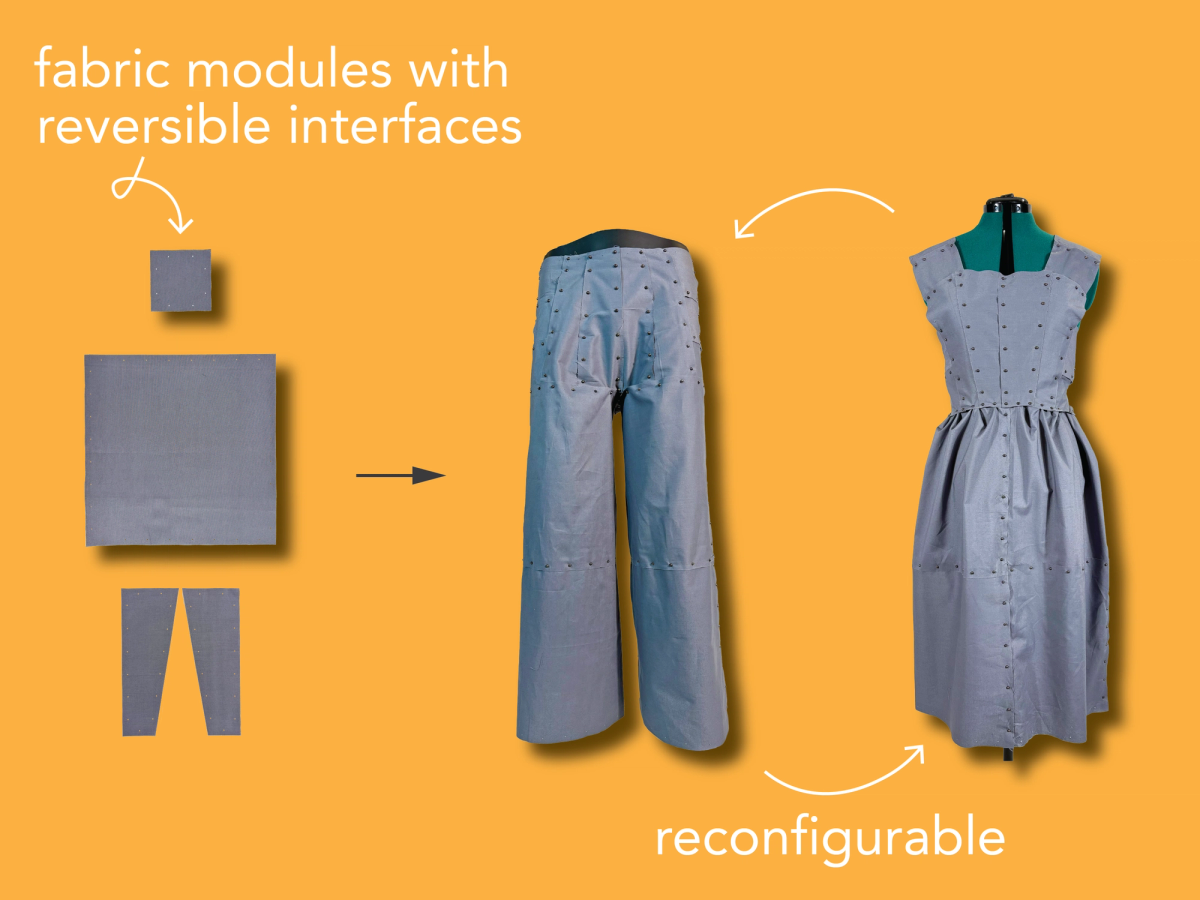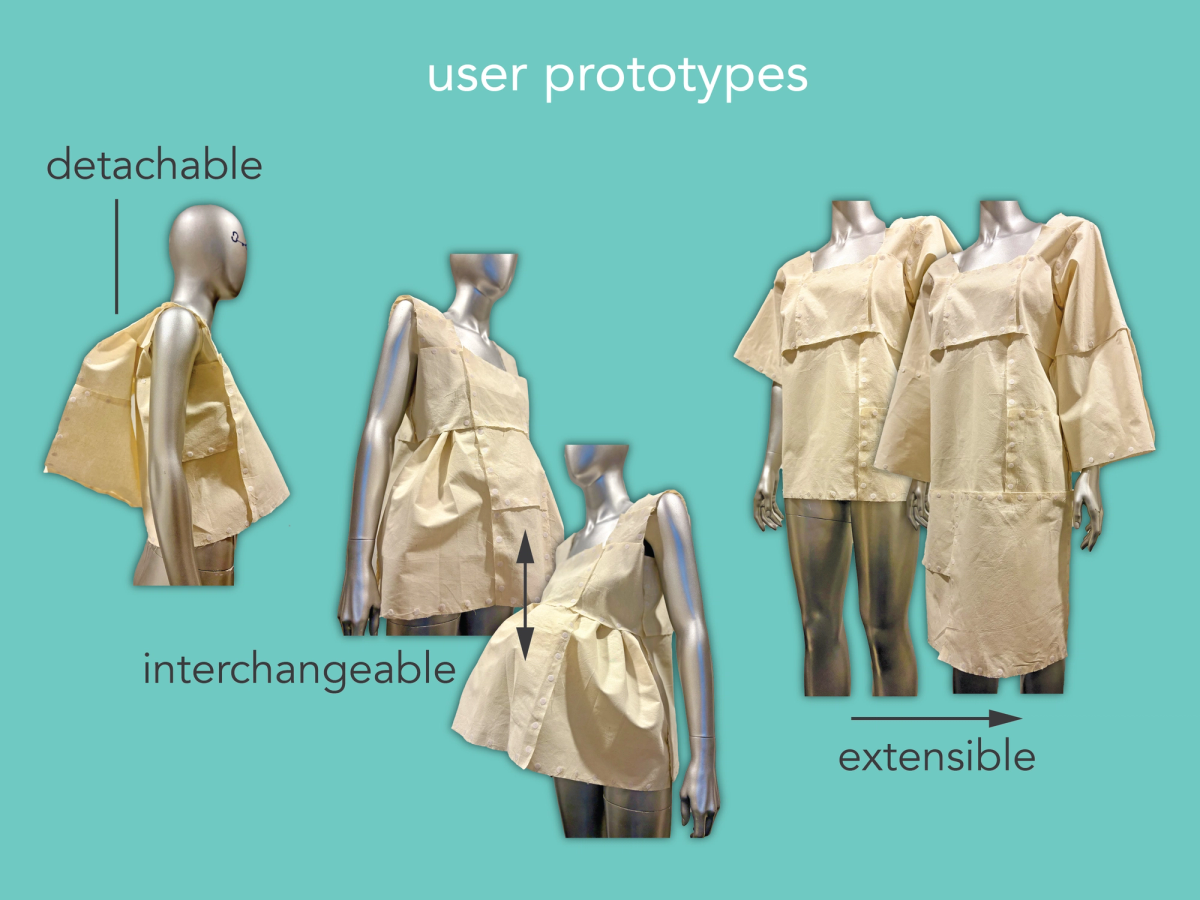Refashion: A Toolkit for Modular and Reconfigurable Clothing
About
Rebecca Lin, a graduate student in EECS and 2025 MAD Design Fellow, is developing Refashion—a system that reimagines garments as dynamic assemblies of LEGO-like fabric modules joined by reversible connectors, enabling them to be resized, restyled, repaired, and reused across evolving bodies, trends, and functions through reconfiguration.

Problem
The fashion industry produces over 100 billion garments each year, with about 92 million tons discarded annually. This level of overproduction and waste reflects a fundamental design limitation: most garments are created as static products rather than adaptable systems. Once a garment no longer suits its wearer, it is usually discarded rather than repurposed, since alterations demand time and skill. The question, then, is: how might we design clothing that evolves—as their wearers inevitably do?
Approach
Refashion reimagines garments as dynamic assemblies rather than static products. It enables users to build and rebuild garments from a compact library of fabric modules joined through reversible connection interfaces. The modules are standardized to support low-waste fabrication and simple assembly, yet they support expressive garment shaping through gathers, pleats, and darts. A companion design software lets users sketch modular patterns, simulate fit across avatars, and auto-generate efficient assemblies that minimize the number of required modules.

Impact
Refashion addresses overconsumption and waste in fashion by promoting adaptability and versatility in garment design. Its reconfigurable modules allow clothing to evolve with changing contexts—without the need for entirely new pieces. In user studies, one participant designed maternity wear that expands with a single panel swap to accommodate different stages of pregnancy. Others explored adding stylistic or functional elements, such as peplums and hoods, or creating garments that extend or detach to transition between work and leisure.

Refashion further encourages textile longevity through repair and repurposing. Damaged modules can be replaced individually rather than discarding the entire garment, and modules can be fabricated from unwanted textiles.

Beyond sustainability, participants considered Refashion as a promising tool for learning and prototyping. Novices in pattern-making could easily design and assemble functional garments. The software facilitates rapid digital exploration and iteration, while the no-sew modular system enables the construction of tangible prototypes within 15–30 minutes—substantially reducing the time traditionally required for measuring, drafting, cutting, and stitching garments. Furthermore, the reusability of modules alleviates concerns around prototyping costs and material waste.
Finally, participants highlighted modularity as an avenue for creative expression, employing techniques such as cutouts and patchwork for personalization. Providing users with greater agency in garment design and construction may strengthen emotional attachment and promote sustained care and reuse.

Further Reading
Refashion was presented and demoed at UIST 2025 in Busan, South Korea, and was recently featured in MIT News. It will also be shown at SCF 2025 at MIT. For the most up-to-date details, please visit the project’s page.
This project received MAD funding.